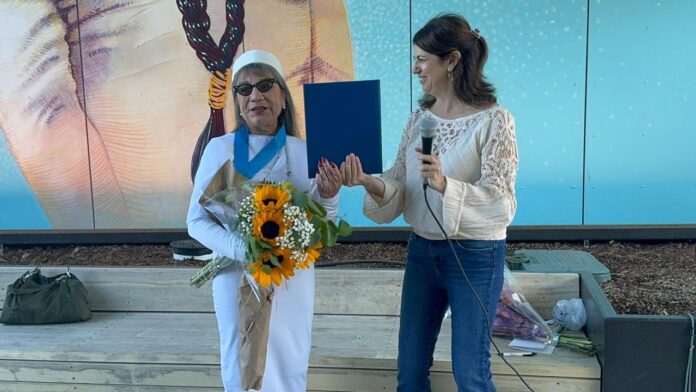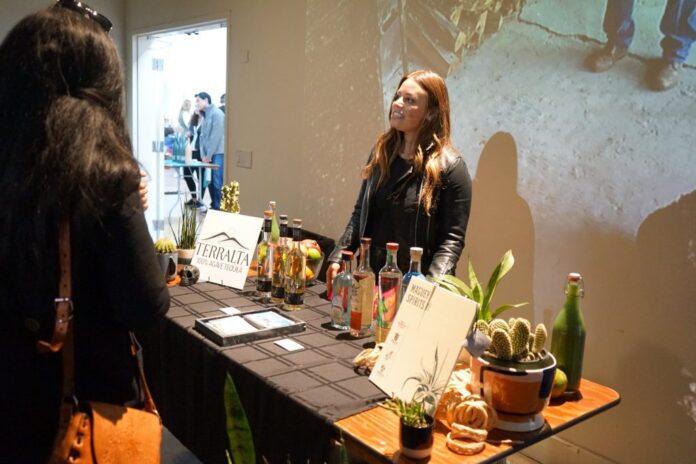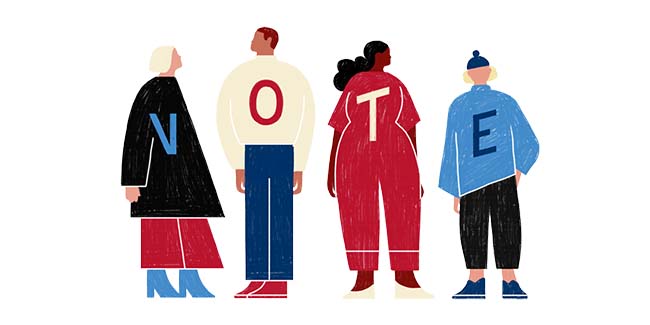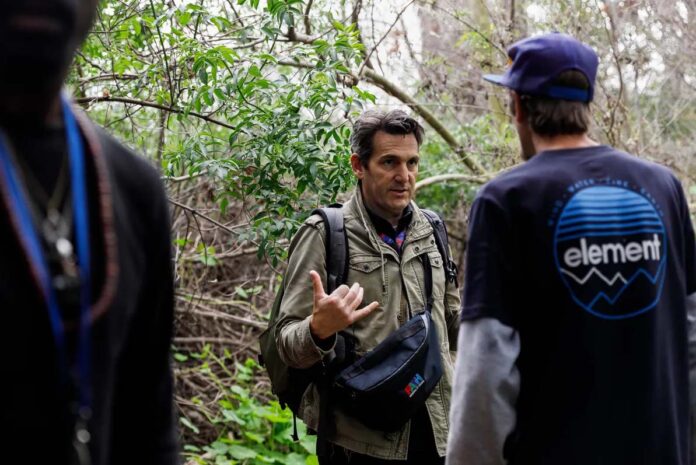Homeless service providers are scaling back and taking out loans as they wait for late payments from the government
by Marisa Kendall
CalMatters
California’s homeless service providers have a problem: They aren’t getting paid on time, and it’s making it even harder for them to get people off the street.
Nonprofits that provide everything from shelter beds, to counseling for homeless residents, to affordable housing, say they regularly are kept waiting weeks, if not months, for the city, county and state funding they rely on. That means they’re struggling to pay their employees, make rent payments for their clients, and, in some cases, even keep the lights on. Some are turning down new projects despite the massive need for services in their communities. Others are borrowing to stay afloat, ending up paying tens of thousands of dollars each month in interest — money they would rather spend on helping homeless Californians. It’s hampering the state’s efforts to solve what is arguably its biggest problem: Nearly 186,000 people have nowhere to call home.
“It is the single biggest factor in our inability to grow and serve more people,” said Vivian Wan, CEO of Abode Services, which provides shelter, housing and other aid for unhoused people across seven Bay Area counties. “This is a huge issue.”
And it’s getting harder to ignore. With inflation driving up expenses and the growing homelessness crisis driving up need, some nonprofits have reached their breaking point. After a group of Los Angeles-based homeless service providers raised the alarm earlier this year, the county Board of Supervisors overhauled the way it doles out funds. Providers hope the move will be replicated throughout the state.
Why are nonprofits missing millions of dollars?
It’s the kind of problem that’s a hallmark of bureaucracy.
When a city opens a new shelter or housing program, it lacks the capacity to run the program itself, so it contracts with a nonprofit that has expertise working with unhoused clients. The nonprofits who provide these services told CalMatters that because city officials are trying to move quickly, they sometimes set up the program and start providing services immediately — even before a formal contract is signed. The nonprofit can’t get reimbursed for the services it’s already provided until that contract is finalized, which can take months.
But even when a contract is drawn up right away, it generally requires the nonprofit to start work before getting paid, and then send an invoice to the city asking for reimbursement. That process can get bogged down in delays at multiple levels.
First, drafting invoices is onerous and time-consuming, requiring the nonprofit to account for every penny spent. Next, the city or county has to go over each invoice with a fine-tooth comb, which can take weeks or months. Finding any problems means the process starts over.
Delays also crop up when the city is waiting for state funding to pay its contracts.
Santa Cruz County usually pays its invoices within two to four weeks, said Robert Ratner, director of Housing for Health for the county. But if there’s a problem with the invoice, payment could be delayed another month.
“I think everyone involved would like it to go faster,” he said.
On any given day, Abode generally is owed between $35 million and $40 million from their various government contracts, Wan said. Despite those missing funds, Abode still has to make rent payments on the first of every month for its thousands of clients living in subsidized housing.
“We’re not going to let people become homeless or not get their rent paid,” Wan said.
Instead, she’s turning down new projects that would make the organization’s funding gap worse — to the detriment of the people in desperate need of Abode’s services. She recently decided not to apply for a contract providing rental assistance on behalf of the Santa Clara County Probation Department, even though Abode is one of the few organizations that could do the work.
Multiple nonprofits CalMatters spoke with said they’ve had to take out high-interest loans to fill the gaps while they’re waiting for government funds. The People Concern, which provides homeless services in Los Angeles County, is paying $63,000 a month in interest on its lines of credit. The nonprofit will never get that money back, even when its government checks come in.
“That’s $63,000 a month we should just be burning, because we can’t be compensated for it,” said CEO John Maceri.
Funding delays also are hampering Los Angeles Mayor Karen Bass’ signature effort to get Angelenos off the streets. Through the program dubbed Inside Safe, the city contracts with nonprofits to move people from encampments into hotels.
PATH was one of the nonprofits that jumped at the chance to participate, back when the program first launched in 2022. But lately, CEO Jennifer Hark Dietz is more wary. As of last month, the city owed her organization close to $7 million for its work on Inside Safe. The city, under recent pressure from local nonprofits to speed up its reimbursements, paid off some of that last week. But it still owes PATH $1.18 million for work done in June, Dietz said.
Now, to avoid over-extending her organization, she’s having to make hard choices. She’s started refusing when the city asks her to take on new Inside Safe locations before a contract is in place.
“It’s definitely for me, personally, heartbreaking,” she said.
Mayor Bass knows there’s a problem, and says her office is working on a solution with the city council, but she hasn’t provided details on what that solution will look like or when it will roll out. The situation came to a head in May, when the city owed $26 million on its homeless services contracts. In September, the mayor’s office said that money has been paid and all Inside Safe invoices for the first quarter of the fiscal year have been processed.
“We must transform the City’s entire approach to payment — going beyond the payments for service providers — to overhaul and modernize the entire system,” Bass spokesperson Clara Karger said in an emailed statement.
Los Angeles County recently tried to do just that. Now, the county offers nonprofits advances on some of their contracts upfront, so they don’t have to do work without first getting paid.
“It’s new,” Paul Rubenstein, deputy chief external relations officer for the Los Angeles Homeless Services Authority, said of the overhaul. “But it feels like it’s working.”
California’s role in the problem
Sometimes, the state government is to blame for these delays. In April, Gov. Gavin Newsom awarded his latest round of grants through the Encampment Resolution Fund, a program that doles out state money to help cities and counties clear encampments and move camp occupants indoors. Marin County, which won an $18 million grant, was told to expect the contract in July, said Gary Naja-Riese, director of the county’s Whole Person Care and Homelessness Division. Instead, the document kept getting delayed, and now it’s been five months and no one has yet to see a penny. The state finally sent out the contracts last month, but it’s unclear when the money will come through.
That’s created a big headache in Santa Barbara County. The county won a nearly $8 million grant to clear 21 vehicle encampments, and it contracted with nonprofit New Beginnings to do the work of connecting with people living in cars and RVs, offering them services and moving them into housing. New Beginnings got straight to work as soon as its contract with the county was signed in June, and so far has moved at least 23 people into shelter and another six into permanent housing. They couldn’t afford to wait: the grant has a strict timeline, requiring recipients to spend half the money by June 30, 2025, or risk losing it.
But New Beginnings has yet to be paid for that work. The nonprofit has had to borrow money — $350,000 so far, at a 9.5% interest rate — to make ends meet in the meantime, said Executive Director Kristine Schwarz. She’s worried borrowing too much more will plunge her organization into a hole it can’t get out of. So she’s pulling back on the services she offers. That means she’s leaving people on the street because she can’t afford a hotel room for them, she said.
“I can’t just continue to spend money without any idea of when we’re going to get reimbursed,” Schwarz said.
The delay at the state level is at least partly because the California Department of Housing and Community Development took over the grants from another state agency this year.
“The ERF Round 3, Window 1 standard agreements were somewhat impacted by the transition and additional accountability considerations, but that should not be an issue going forward,” Megan Kirkeby, deputy director of housing policy development for the Department of Housing and Community Development, said in an email to CalMatters. Cities and counties will be reimbursed for money they spent before the contracts were signed, she said.
‘I need my money when it’s due’
Funding delays are an especially dire problem for small nonprofits. Kalain Hadley’s organization Reclaim-Possibility provides 44 beds in Los Angeles for men recently released from jail and prison. Hadley opened right before the COVID-19 pandemic struck, and because he had no clients and therefore no income, had to burn through his savings and go into debt to keep the organization afloat.
Now, his payments come from the state and Los Angeles County, through two contractors that act as intermediaries. They’re usually at least a few days late, Hadley said. That might not be a big deal for a larger nonprofit, but for an organization like his that has no cushion, it’s devastating.
“I’m running around trying to withdraw cash so I’ll be able to pay my folks over the weekend. And that’s the pattern every month,” he said. “I need my money when it’s due.”
To stay afloat, Hadley is taking advantage of a new lifeline in Los Angeles County. Nonprofit Future Communities Institute recently launched a program called the LA Working Capital Fund to give no-interest bridge loans to homeless service nonprofits waiting for government funding. So far, Hadley has taken out four loans ranging from $15,000 to $20,000 – all of which he’s paid back.
Future Communities Institute hopes to raise money to scale up the program and offer more loans, said Justin Szlasa, director of homeless initiatives.
Without that money, Hadley’s nonprofit might have shut down by now, he said. But even so, the loans aren’t a solution to the overarching problem — they’re just a Band-Aid.
“Somebody needs to figure out why we can’t get paid on time,” Hadley said.
 Trump was able to cobble together a diverse coalition of Hispanics, working-class voters, and rural voters to clinch victory. Only 28 percent of Americans felt the country was heading in the right direction—no incumbent party has ever retained the White House with an atrocious stat line.
Trump was able to cobble together a diverse coalition of Hispanics, working-class voters, and rural voters to clinch victory. Only 28 percent of Americans felt the country was heading in the right direction—no incumbent party has ever retained the White House with an atrocious stat line.












